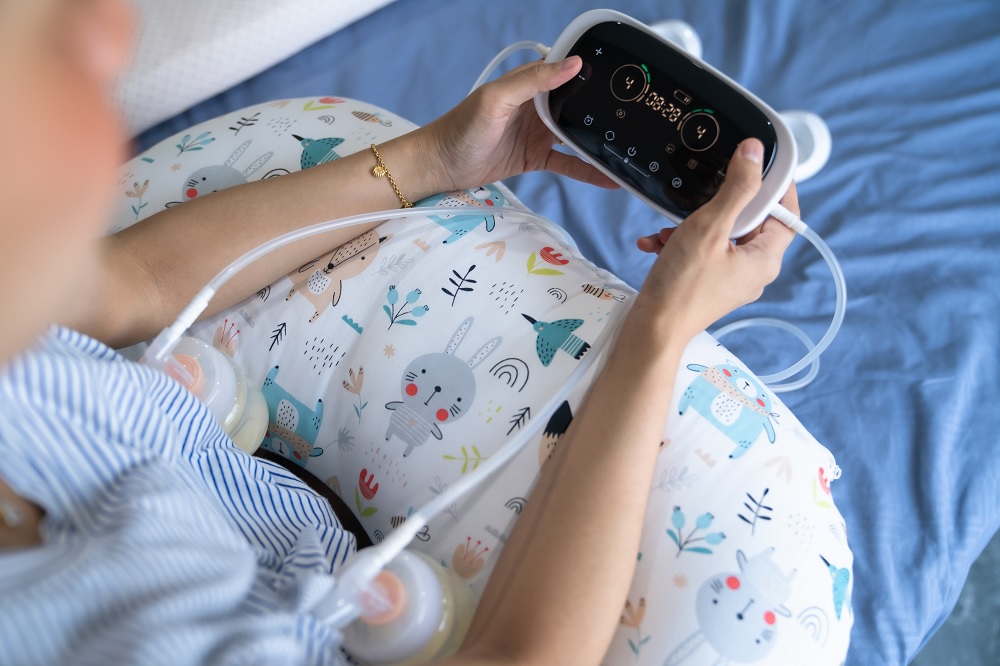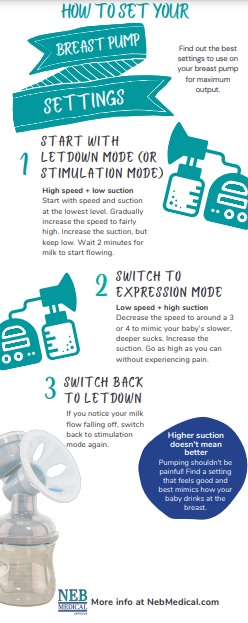When you read a description for any breast pump on the market, the manufacturers will almost always tout two things: how powerful the suction is (listed in mmHg), and how many stimulation and suction modes they have. But if you’re new to breast pumping, you may be wondering, how much power do I really need and what are all of those modes for?
Here are answers to some of the most common questions with regards to the best suction settings for your breast pump:
Q: Does higher suction mean I’ll pump more milk?
A: First, let’s expel a very common myth — having a more powerful pump does not necessarily mean you’re going to pump more milk.
Electric breast pumps are generally divided into two categories: hospital-grade pumps and personal pumps. Hospital-grade pumps generally have a vacuum strength of between 300 and 350 mmHg, while personal pumps are typically between 200 to 300 mmHg.
Many moms assume that having a pump with a higher suction strength will automatically mean that they will be able to pump more milk, but in fact, pumping at too high of a setting can actually inhibit your milk production. That’s because too much suction can cause your breast tissue to be squeezed together too much, cutting off milk flow from your milk ducts. And it can hurt your nipples, too.
So although hospital-grade pumps will be more powerful, many of the personal pumps will meet your needs as well.
Remember, breast pumping should never feel painful. Instead of turning your suction up to the highest setting, it’s more important to find a setting that feels good and best mimics how your baby drinks at the breast.
Q: What are all of the settings for on a breast pump?
A: The various levels and settings on each breast pump are designed to help you control both the strength of the suction and the speed of the pump, both of which are key in allowing your pump to mimic how your baby nurses, which will make your pumping more effective.
Pumps are made with different setting because babies use different sucking techniques at the breast.
When you first put your baby at your breast, she’ll start by sucking very quickly and shallowly, which sends a signal to your brain to start producing milk. On breast pumps, this is often referred to as the stimulation mode or the massage mode.
Once your milk starts flowing (also known as letdown), your baby will start sucking more deeply and more slowly so he can really be able to swallow the milk. On a breast pump, this is called the expression mode.
Surprisingly, your baby doesn’t use just one type of sucking pattern during a feeding. In fact, babies may switch back and forth between both types. So if your milk stops flowing as much while you are pumping, you may need to switch back to stimulation mode again.
Q: What is the best breast pump setting for letdown?
A: To get your milk to start flowing, you want your pump in stimulation mode, i.e. high speed at a low suction. To achieve this, play around with the settings to get the right amount of stimulation that will make you have letdown quickly. Follow these steps to achieve letdown:
- Turn on the breast pump with the speed and the suction at the lowest levels possible.
- Gradually increase the speed (you can go up fairly high here), but not so much that it is uncomfortable.
- Next, increase the suction a bit, but keep it fairly low.
- Wait about two minutes for letdown.
Q: What is the best breast pump setting for expression?
A: After your milk starts flowing, you want to go into expression mode. Follow these steps to achieve expression:
- Decrease the speed to around a 3 or 4 to mimic your baby’s slower, deeper sucks.
- Increase the suction. Go as high as you can without experiencing pain.
- If you notice your milk flow falling off, switch back to stimulation mode again.
If your settings are right, your breasts should feel completely empty after about 15 to 20 minutes of pumping.
Q: Is it better to have a breast pumps with automatic settings or use manual settings?
A: Although many breast pumps have multiple settings for both speed and suction that you can control manually, some also come equipped with preset “modes” that you can use for both stimulation and expression. However, in most cases, you’ll still need to adjust the speed and suction strength yourself even when you are in the right mode.
For example, all Medela pumps have 2-Phase Expression technology, which means that they start out in stimulation mode, and once your milk starts flowing, you can press the letdown button to have the pump switch into expression mode, but then you’ll have to adjust the suction as needed.
However, there are a few pumps that make it even easier to find the right settings. Medela’s pumps that offer MaxFlow technology come with pre-programmed speed and suction settings that the company says are designed to be the most effective pumping settings.
Another great feature available on some breast pumps is a memory function, which you can use to record your favorite settings. Some of the breast pumps we carry at Neb Medical that come with a memory function include:
- Ameda Mya with Large Tote
- Medela Freestyle Flex
While having preset modes and memory functions can be useful, sometimes choosing your settings manually can be just as effective, especially because your breasts can feel different depending on the day.
We hope this helps clarify why there are so many different settings on each pump and why you need to use them!
(Click on infographic to see larger version)



